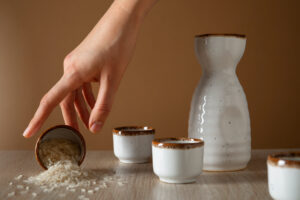Fast Facts
Frequent salt use increases type 2 diabetes risk by up to 39%.
Processed foods contribute to 75% of daily sodium intake
Reducing sodium gradually is more sustainable than sudden changes.
Frequently adding salt to your meals could increase your risk of developing type 2 diabetes, a new study reveals.
Understanding the Link Between Sodium and Type 2 Diabetes
It’s well-known that diet plays a crucial role in the development of type 2 diabetes. Traditionally, the focus has been on carbs and sugars. However, new research indicates that high sodium intake could also be a significant factor. A recent study published in Mayo Clinic Proceedings found a strong correlation between frequent salt use and an increased risk of type 2 diabetes.
Research Findings from Tulane University
Researchers from Tulane University, who conducted this study, were driven by earlier findings linking long-term salt intake to higher risks of cardiovascular diseases and mortality. “We recently found that adding salt to foods is a potential indicator for long-term salt intakes, which are related to higher risk of cardiovascular disease and mortality,” said study author Dr. Lu Qi, director of the Tulane University Obesity Research Center and the Tulane Personalized Health Institute.
Analyzing Data from the UK Biobank
The study analyzed data from over 400,000 adults in the UK Biobank, a long-term health research initiative. Participants, initially free from diabetes, chronic kidney disease, cancer, and cardiovascular disease, were tracked for a median of 11.9 years. They were categorized based on their salt-adding habits: never/rarely, sometimes, usually, or always. The findings were stark: compared to those who rarely or never added salt, the risk of developing type 2 diabetes increased by 13%, 20%, and 39%, respectively, for those who sometimes, usually, or always added salt.
The Type of Salt Doesn’t Matter
Interestingly, the study did not differentiate between types of salt, such as sea salt or kosher salt. According to Vandana Sheth, a registered dietitian nutritionist and certified diabetes educator, the type of salt is less important than its sodium content. “The key consideration is the sodium content in salt, which is relatively consistent across these types,” Sheth explained. Excessive sodium intake, regardless of the source, poses health risks.
The Hidden Sodium in Processed Foods
In addition to table salt, processed foods are significant contributors to daily sodium intake. The American Heart Association notes that up to 75% of Americans’ daily sodium comes from processed foods like soups, sauces, condiments, and canned goods. Dr. Qi emphasized that these additional sodium sources might also contribute to the risk of type 2 diabetes. The study’s observational nature means it cannot prove causation, but the associations are compelling.
Connecting Sodium Intake and Diabetes Risk
Traditionally, the link between diet and diabetes has focused on carbohydrates, which break down into sugars. However, sodium’s role is emerging as a potential risk factor. High sodium intake may be associated with higher-calorie meals, leading to weight gain and increased diabetes risk. “Our study suggests that high adiposity related to adding salt to foods may partly account for the observed associations,” Dr. Qi noted. Additionally, sodium might trigger increased appetite, potentially leading to obesity and inflammation, which are risk factors for diabetes.
Simple Ways to Reduce Sodium Intake
Reducing sodium intake doesn’t mean sacrificing flavor. Here are some practical tips:
- Remove the Salt Shaker: Keeping the salt shaker off the table can help reduce the temptation to add salt to meals. Out of sight, out of mind.
- Gradual Reduction: Sheth recommends reducing sodium gradually to make the changes more sustainable.
- Rinse Canned Foods: Rinse canned beans and vegetables to remove excess sodium.
- Opt for Fresh Foods: Fresh fruits, vegetables, whole grains, and lean proteins generally contain less sodium.
- Read Labels: Check food labels for sodium content. Foods with 5% or less of the Daily Value (DV) are low in sodium, while those with 20% or more are high.
- Experiment with Spices: Use herbs, spices, citrus, vinegars, and salt-free seasoning blends to enhance flavor without adding salt
Understanding the potential risks associated with high sodium intake is essential for preventing type 2 diabetes. By making small changes to reduce salt consumption, you can improve your overall health without compromising on flavor.












